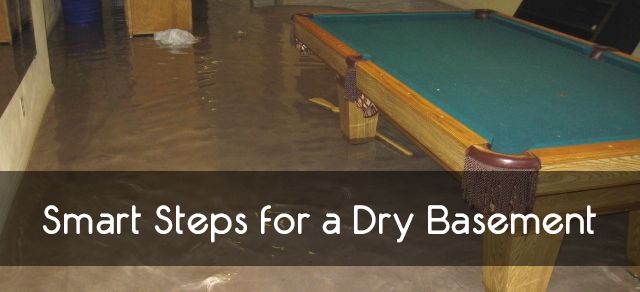
Ask any homeowner with a basement about their biggest fear, and aside from a natural disaster, you’re likely to get plenty of people citing water damage and flooding. Basements are prone to this kind of problem for a couple reasons. The most obvious is that so much of a home’s plumbing and water flow systems run in and out of the basement. Their position below ground level also means they can be humid, and the way the surrounding land holds and handles water can play a role as well. Lastly, since basements, particularly ones that aren’t finished, are places we don’t spend large portions of our time, a minor issue can more easily become a major one, since these spaces go unchecked for longer in many cases.
Luckily, there are ways to avoid these issues; otherwise we wouldn’t have basements in the first place! The first is to make sure you have a quality, functional sump pump, and ideally, a backup power source for it, should it go out during weather or an outage. There are other, more set-it and forget-it type strategies you can implement as well.
One of the best, both for helping to prevent water damage, as well as offering energy conservation, is wrapping your pipework with insulation. While it helps treated water stay at temperature, in the winter, it can reduce the chances of freezing, bursting, and leaking pipes. Non-absorptive materials like closed-cell foam can help insulate while avoiding rot and mold issues from condensation or humidity.
Lastly, if you don’t go down into your basement on a daily basis, checking on it more frequently can save you an incredible amount of stress and money if you’re able to spot an issue while it’s still small, rather than going to get your Christmas lights and stepping into two feet of water.
—
Article submitted by The Foam Factory, an online retailer of thermal insulation materials, including a range of closed-cell foam that call be rolled, wrapped, and fitted around pipework.